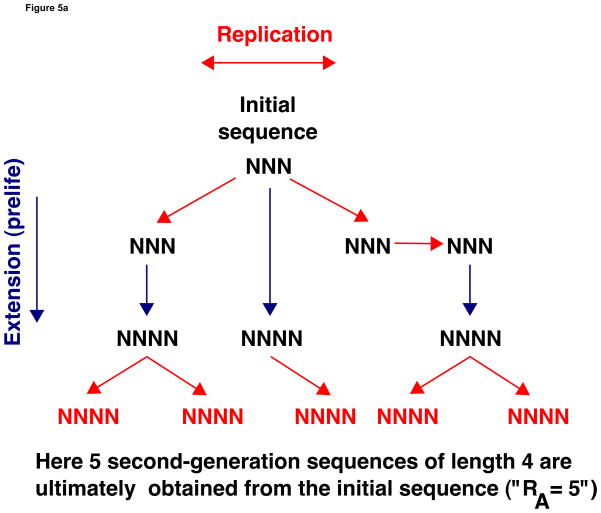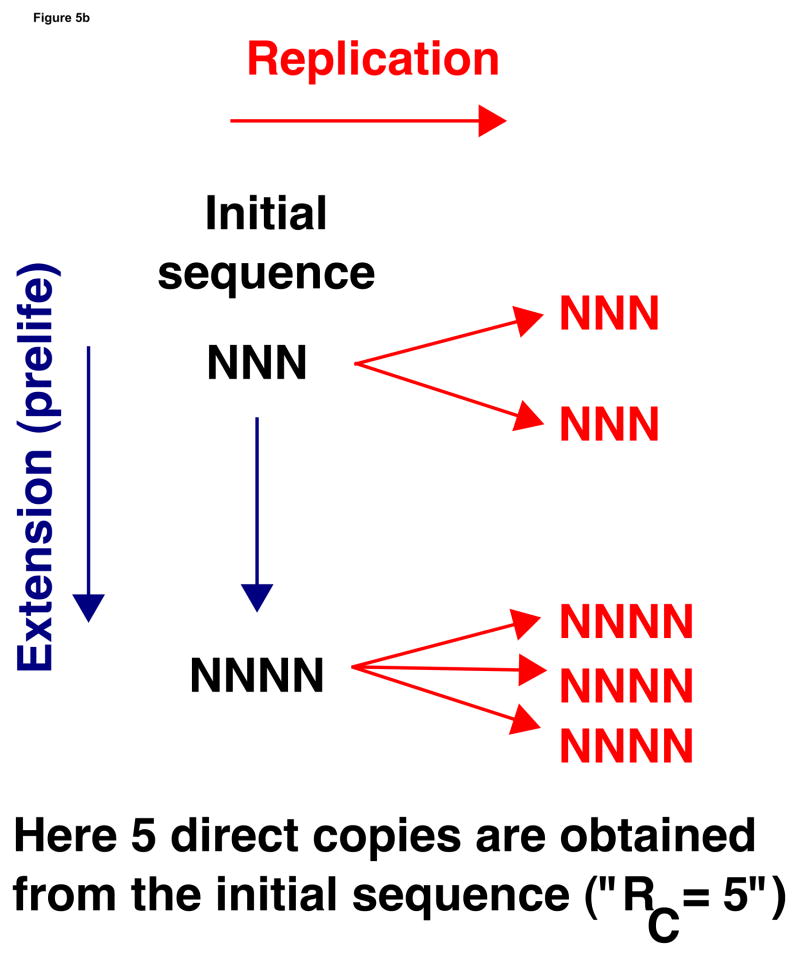Figure 5.
Suppose sequences of length n1 to n2 replicate and that a sequence of length i can be extended to form a sequence of length i + 1. (a) The chain amplification ratio RA is the number of second generation templates of length n2 obtained from a single template of length n1. “Second generation” means that the sequence has exactly one other sequence of length n2 in its production lineage. Here n1 = 3, n2 = 4, and RA = 5, if the numbers are interpreted as averages. (b) The cumulative basic reproductive ratio RC is the number of direct offspring of a sequence even as it is extended to form longer sequences. Again n1 = 3 and n2 = 4. The length 3 sequence is copied twice before being extended. The new length 4 sequence is copied three times before being extended. Thus RC = 5, again if the numbers are interpreted as averages.


